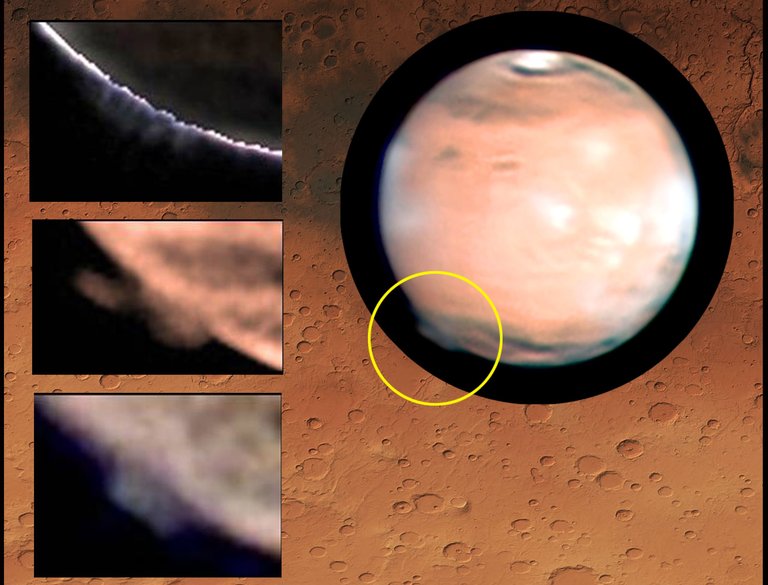The UPV/EHU Planetary Science Group analyses the highest crest ever detected on Mars

According to Agustín Sánchez, head of the research group Lavega, “the phenomenon observed three years ago is very rare. Advanced astronomers were in charge of collecting the images, and although the scientific community in general did not pay much attention to them, we realized it was a special phenomenon. So we decided to analyze it in depth.”
After the analysis of the images, they realized that it was “something strange”: “On the one hand, because it is the highest ridge that has been seen so far, because we have calculated to 200-250 kilometers of the surface of Mars”. Sometimes they have seen clouds 100 kilometers high, but never so high. “We have proposed two hypotheses to explain it, but in reality none of them satisfies us.”
Sánchez Lavega says that they do not know how often this phenomenon occurs. “It must be taken into account that the vehicles and boats that circulate do not look at limbo, do not look at the edge of the plant, but at the ground and other details. Therefore, all the images we have are from Earth. And I call them astronomical because they are amateurs; if not, they work as well as professionals. However, they are those who look at limbo and they have allowed us to know the phenomenon.”
He explains that the ridge only appeared at dawn, in the Terra Cimmeria region (mid-latitude of the southern hemisphere), “then it seems that it dissolves fairly quickly.” After ten consecutive days, he could not disappear and after a few days he reappeared, but not as high as in the previous idea.” In fact, this extraordinary height, about 200 kilometers, was only measured on 20 and 21 March, two days of the first time. In any case, the phenomenon was very evident by its height and its extension.
Two hypotheses:
“We have analyzed two situations to explain the phenomenon. On the one hand, there may be a cloud made up of crystal clear water or carbon dioxide. For this to happen, the temperature should suffer a drastic fall in the high atmosphere, and it would probably need a condensation core,” explains Sánchez Lavega.
The other option would be a phenomenon similar to that of the terrestrial aurora. However, Sánchez Lavega acknowledges that this hypothesis is very weak. “I think it can be a phenomenon similar to that of the night clouds that occur at the Earth’s Poles. These clouds originate in very cold places and appear much higher than the higher clouds (cirrus) that occur elsewhere. However, neither the cloud hypothesis, let alone that of the aurora, satisfy us, but they are the only explanations we have found.”
Sánchez Lavega considers that the phenomenon has shown that it is worth studying the limbo of Mars. “Let’s see if in future missions and observations we have the possibility of collecting more data and the phenomenon we know better.”
Buletina
Bidali zure helbide elektronikoa eta jaso asteroko buletina zure sarrera-ontzian












